No products in the cart.
Return To Shop
What Exactly is a Clergy Cassock?
A Clergy Cassock is a distinctive and symbolic garment worn by clergy members, particularly in Christian religious traditions. This long, flowing robe serves as a visual representation of the wearer’s commitment to a life of piety, service, and religious devotion. The cassock is often associated with various denominations within Christianity, including the Catholic Church, Anglican, Orthodox, and other Christian sects.
The Cassock typically features a simple and straight design, with a close-fitting neckline and long sleeves. It is often worn in combination with a white Clerical Collar, further emphasizing the wearer’s role in the clergy. The color of the Clergy Robes can vary, carrying specific symbolic meanings within different religious contexts.
In addition to its role as a symbol of religious dedication, the clergy cassock also serves practical purposes. It provides a sense of uniformity among clergy members, creating a distinct and recognizable appearance during religious ceremonies, processions, and official duties.
The clergy cassock is not exclusive to Christianity, as similar garments are found in other religious traditions. For example, in Judaism, certain Hasidic sects wear a garment known as the “bekishe” or “frak,” which shares similarities with the Christian clergy cassock.
Overall, the clergy cassock holds deep significance within religious communities, embodying a connection to tradition, spirituality, and the sacred responsibilities undertaken by clergy members in their service to their faith.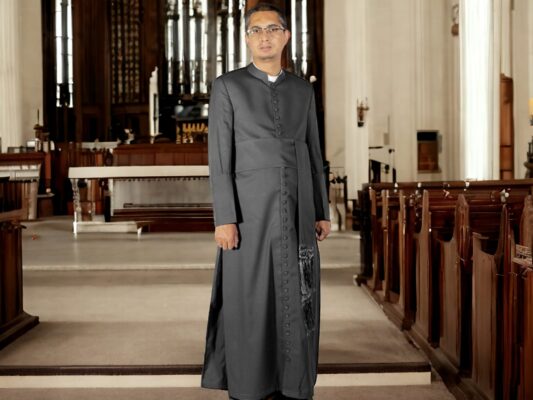
A Comprehensive Guide
In the realm of religious vestments, the Black Cassock for Mens stands as a timeless symbol of tradition and spirituality. Understanding what a cassock is and its significance in various religious practices is key to appreciating its rich history.
Exploring the Origins of the Cassock
To truly grasp the essence of the cassock, we must embark on a journey through its origins. The term “cassock” finds its roots in the Italian word “cassa,” meaning “case” or “container.” In the early stages, this garment served as an outer cloak for scholars and intellectuals, emphasizing a connection to learning and wisdom.
As centuries passed, the cassock underwent transformations, adapting to the changing needs and cultural nuances of different religious communities. Initially worn by academics, it transitioned into a distinctive garment for clergy members across various denominations.
A Garment of Reverence
In many religious traditions, the cassock symbolizes a commitment to a life of piety and service. Its long, flowing design is not merely a sartorial choice; it serves as a visual representation of a spiritual journey. Whether worn in the hallowed halls of a cathedral or during religious processions, the cassock commands a sense of reverence.
Colors and Variations
The cassock isn’t a one-size-fits-all garment; it comes in an array of colors and styles, each carrying its own symbolic weight. The hues may vary, signifying liturgical seasons, hierarchical ranks, or specific religious orders. Understanding these color codes adds depth to the appreciation of the cassock’s role within a religious context.
Cassocks Across Religions
Cassocks in Christianity
Christianity, with its various denominations, employs cassocks with distinctive styles. The role of cassocks in liturgical practices differs among Catholic, Protestant, and Orthodox traditions.
Symbolism in Christian Faith
In the Christian context, cassocks symbolize the commitment to religious service and adherence to the teachings of Christ. The robes are considered sacred and are worn with a sense of reverence.
Cassocks in the Modern World
A Continuation of Tradition
In our contemporary world, where trends and styles evolve rapidly, the cassock endures as a testament to the continuity of religious traditions. Its presence in religious ceremonies and rites highlights the timeless connection between the past and the present.
While rooted in tradition, the cassock has proven adaptable to the evolving needs of diverse religious communities. Whether in a bustling metropolis or a serene village, the cassock adapts to its surroundings, symbolizing unity in diversity.
Embracing the Cassock’s Legacy
In conclusion, the cassock transcends its role as a mere garment; it embodies a profound legacy of faith, tradition, and continuity. Understanding the roots, symbols, and diverse applications of the cassock enriches our appreciation for this timeless piece of religious attire. As we navigate the complexities of the modern world, the cassock stands as a steadfast link to the spiritual heritage that has shaped communities for centuries.
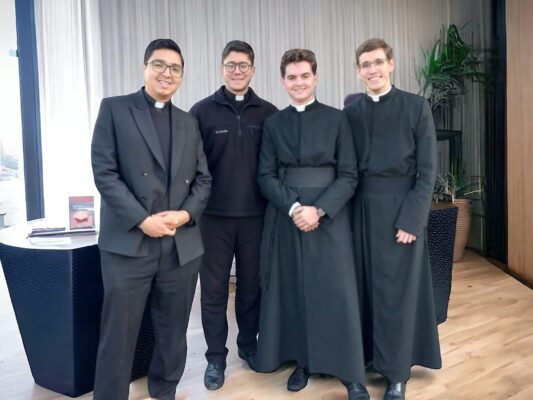
At Clergy Wear Shop, immerse yourself in a collection curated for clergy members, offering a range of cassocks, clerical collars, and vestments. Our shop blends timeless elegance with modern comfort, ensuring clergy members find attire that reflects their commitment to spiritual service. Explore quality craftsmanship and symbolize your dedication with our distinguished clergy wear.
Frequently asked questions (FAQs)
Why do clergy wear cassocks?
Clergy wear cassocks as a visible expression of their commitment to religious service and piety. These distinctive robes symbolize a sense of unity among clergy members and their dedication to spiritual responsibilities.
What did clergy men wear?
Clergy men traditionally wear specific religious attire, such as cassocks, clerical collars, and other vestments. These garments symbolize their commitment to spiritual service and are worn during religious ceremonies and rites.

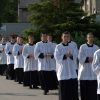


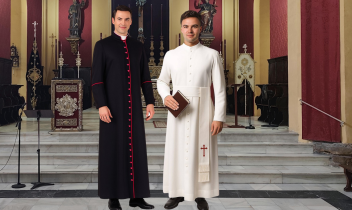
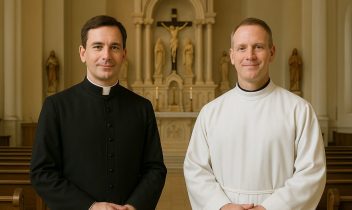
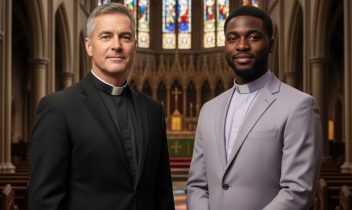
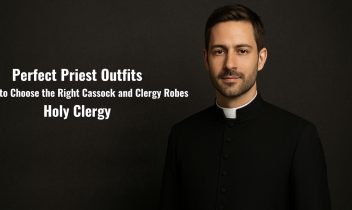
Add comment
You must be logged in to post a comment.